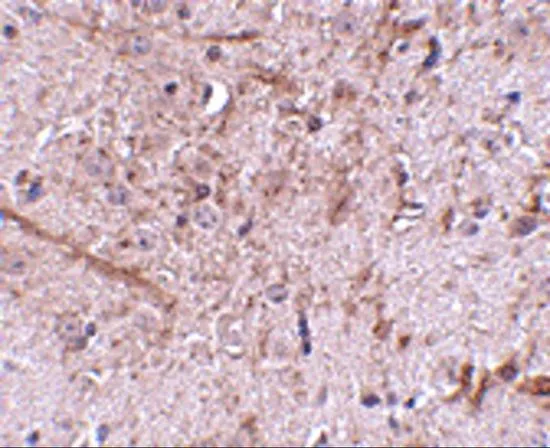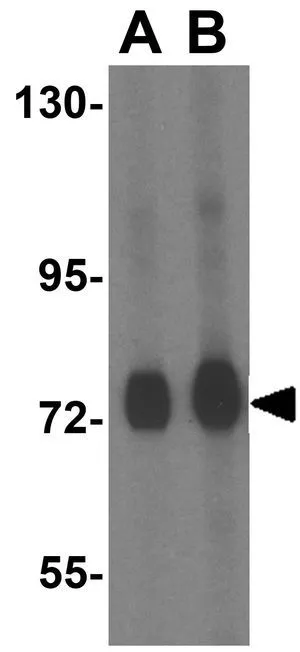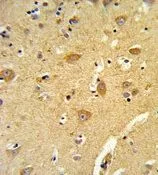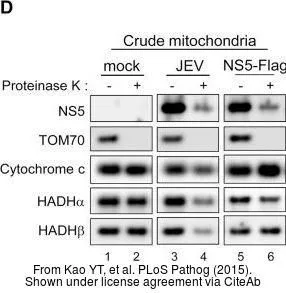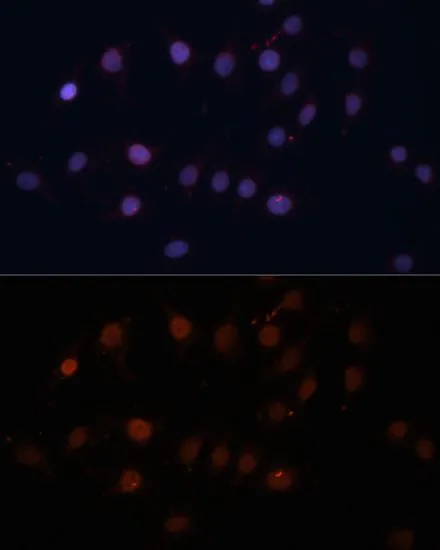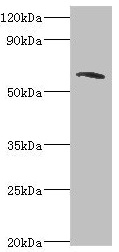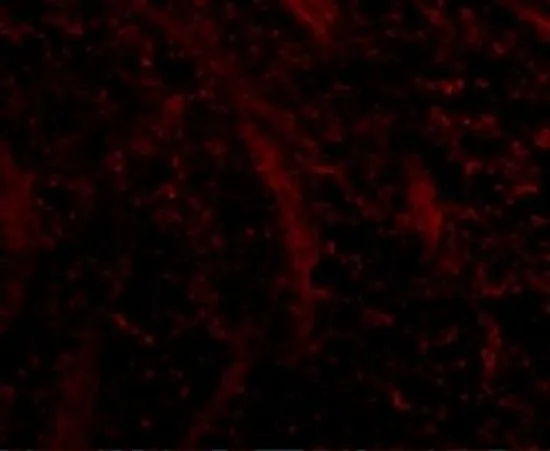
IHC-P analysis of mouse brain tissue using GTX85358 TOM70 antibody. Working concentration : 5 microg/ml
TOM70 antibody
GTX85358
ApplicationsWestern Blot, ELISA, ImmunoHistoChemistry, ImmunoHistoChemistry Paraffin
Product group Antibodies
ReactivityHuman, Mouse, Rat
TargetTOMM70
Overview
- SupplierGeneTex
- Product NameTOM70 antibody
- Delivery Days Customer9
- Application Supplier NoteWB: 2 microg/mL. IHC-P: 2.5 microg/mL. *Optimal dilutions/concentrations should be determined by the researcher.Not tested in other applications.
- ApplicationsWestern Blot, ELISA, ImmunoHistoChemistry, ImmunoHistoChemistry Paraffin
- CertificationResearch Use Only
- ClonalityPolyclonal
- Concentration1 mg/ml
- ConjugateUnconjugated
- Gene ID9868
- Target nameTOMM70
- Target descriptiontranslocase of outer mitochondrial membrane 70
- Target synonymsTOMM70A, Tom70, mitochondrial import receptor subunit TOM70, mitochondrial precursor proteins import receptor, translocase of outer membrane 70 kDa subunit, translocase of outer mitochondrial membrane 70 homolog A, translocase of outer mitochondrial membrane protein 70
- HostRabbit
- IsotypeIgG
- Protein IDO94826
- Protein NameMitochondrial import receptor subunit TOM70
- Scientific DescriptionThe translocase of outer mitochondrial membrane (TOM) complex is a multisubunit complex involved in the recognition, unfolding, and translocation of preproteins into the mitochondria. TOM70, an important member of the TOM complex, contains a tetratricopeptide repeat domain similar to those found in cytosolic chaperones such as Hsp90 and Hsc70 and provides a docking site for these proteins. This interaction is thought to be a critical first step in the TOM70-dependent mitochondrial import, followed by contact between the preprotein and TOM70. After targeting to TOM70, preproteins are translocated through the outer membrane via the TOM40 import pore complex. The precise mechanism of how preproteins progress from TOM70 to TOM40 to full translocation is still unclear. At least two isoforms of TOM70 are known to exist.
- ReactivityHuman, Mouse, Rat
- Storage Instruction-20°C or -80°C,2°C to 8°C
- UNSPSC12352203

